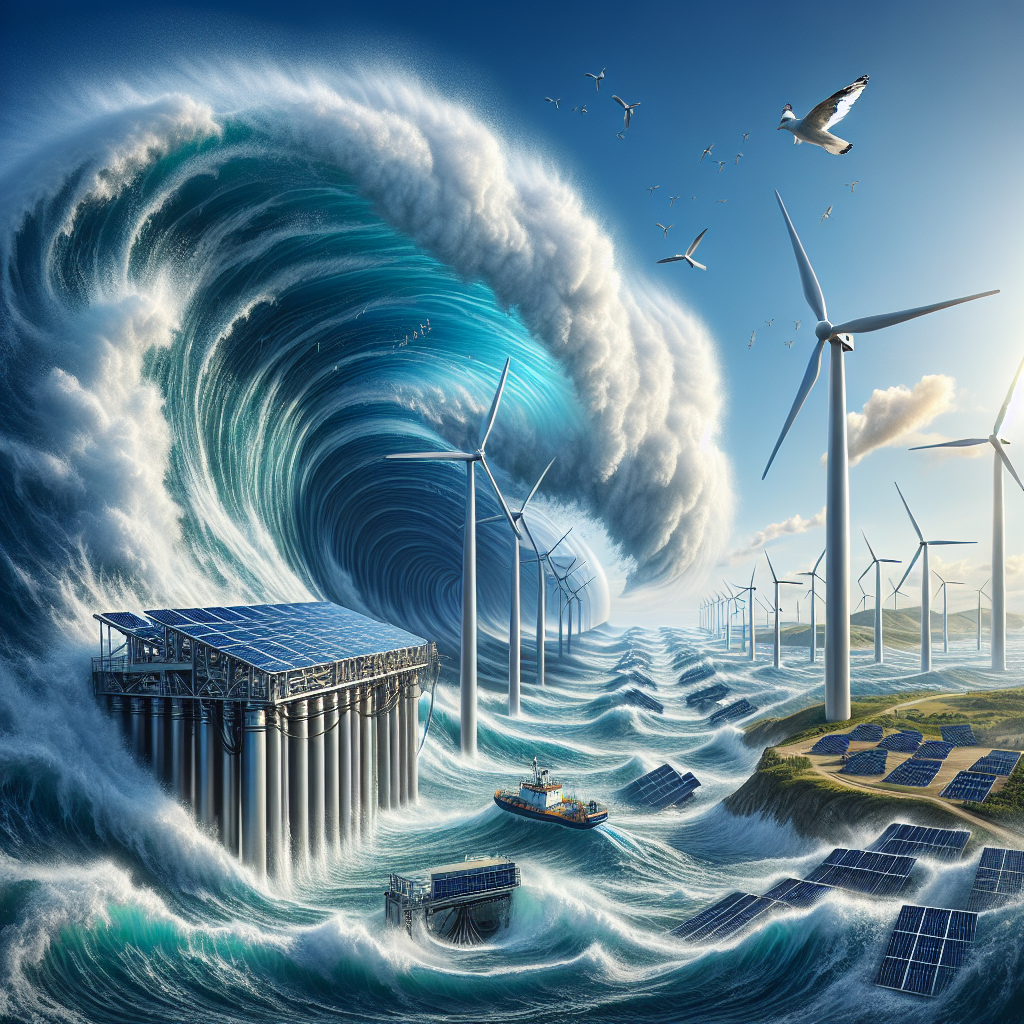The Viability of Wave Energy in the Global Renewable Portfolio
In the quest for sustainable and clean sources of energy, the world has turned its attention to the vast potential of the oceans. Among the myriad of renewable energy sources, wave energy stands out with its promise of abundant, reliable, and efficient power generation. As countries globally aim to diversify their energy portfolios and reduce carbon footprints, the viability of wave energy has become a subject of significant interest and investment. This article delves into the potential of wave energy within the global renewable energy portfolio, examining its advantages, challenges, and future prospects.
The Potential of Wave Energy
Wave energy refers to the power derived from the movement of surface waves or from pressure fluctuations below the surface. The energy generated from waves is both abundant and consistent, given the vastness of the oceans and the continuous formation of waves driven by winds and tides. According to the World Energy Council, the theoretical global potential for wave energy is estimated to be around 2 TW, indicating a substantial contribution to the world’s energy demands if harnessed effectively.
Advantages of Wave Energy
1. Renewable and Clean: Wave energy is a renewable source of power that produces no greenhouse gases or other pollutants during operation, making it an environmentally friendly alternative to fossil fuels.
2. High Energy Density: Compared to other renewable sources like wind and solar, wave energy has a higher energy density, offering more power generation potential per square meter.
3. Predictability: Waves can be predicted more accurately and further in advance than wind, allowing for more reliable energy forecasting and grid management.
4. Global Resource: With oceans covering more than 70% of the Earth’s surface, wave energy offers a globally distributed resource, particularly beneficial for coastal and island communities with limited access to other power sources.
Challenges Facing Wave Energy
Despite its potential, the widespread adoption of wave energy faces several technical, economic, and environmental challenges:
1. Technology and Cost: Wave energy technology is still in its developmental stages, with high initial costs for research, development, and deployment. The cost of wave energy remains higher than that of established renewables like wind and solar, though costs are expected to decrease with technological advancements and economies of scale.
2. Environmental Impact: Concerns exist regarding the potential impact of wave energy converters on marine ecosystems, including effects on marine habitats and wildlife. Further research and careful site selection are essential to mitigate these impacts.
3. Maintenance and Durability: The marine environment is harsh and corrosive, posing significant challenges for the durability and maintenance of wave energy devices. Developing robust and cost-effective maintenance strategies is crucial for the long-term viability of wave energy projects.
The Future of Wave Energy
The future of wave energy is promising, with ongoing advancements in technology and increasing interest from governments and investors. Several pilot projects and commercial wave energy plants are already operational or under development around the world, showcasing the potential for wave energy to become a significant part of the global renewable energy mix.
To accelerate the adoption of wave energy, continued investment in research and development is essential, along with supportive policies and incentives from governments. Collaboration between the public and private sectors, as well as international cooperation, will be key to overcoming the challenges and realizing the full potential of wave energy.
FAQs About Wave Energy
Q: How does wave energy work?
A: Wave energy converters capture the energy of surface waves or pressure fluctuations below the surface and convert it into electricity. There are various technologies for capturing wave energy, including oscillating water columns, point absorbers, and attenuators.
Q: Is wave energy more reliable than wind or solar power?
A: Wave energy tends to be more predictable and consistent than wind or solar energy, as waves can be forecasted accurately several days in advance. However, reliability also depends on geographic location and local sea conditions.
Q: Can wave energy power a whole country?
A: While wave energy alone is unlikely to meet the entire energy demand of most countries, it can significantly contribute to a diversified and sustainable energy mix, especially in coastal and island nations.
Q: What are the environmental impacts of wave energy?
A: The environmental impacts of wave energy are generally lower than those of fossil fuels, but concerns include potential effects on marine ecosystems and wildlife. Ongoing research aims to understand and minimize these impacts.
Q: How much does wave energy cost?
A: The cost of wave energy is currently higher than that of more established renewable sources due to the early stage of technology development. However, costs are expected to decrease with technological advancements and increased deployment.
In conclusion, wave energy presents a promising and untapped resource within the global renewable energy portfolio. Despite facing challenges, its advantages of abundance, predictability, and environmental friendliness position wave energy as a key player in the transition to a sustainable energy future. With continued innovation and supportive policies, the viability of wave energy will undoubtedly grow, contributing significantly to global energy security and environmental sustainability.

